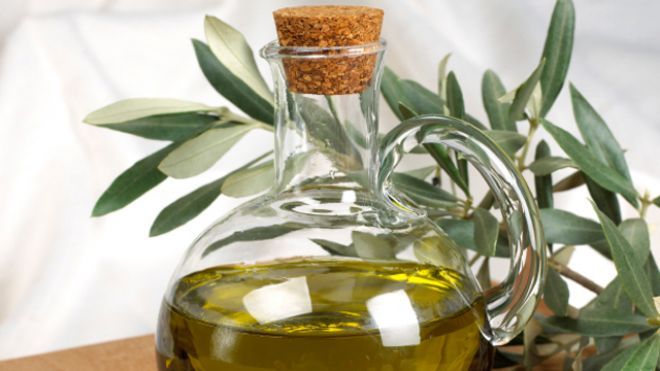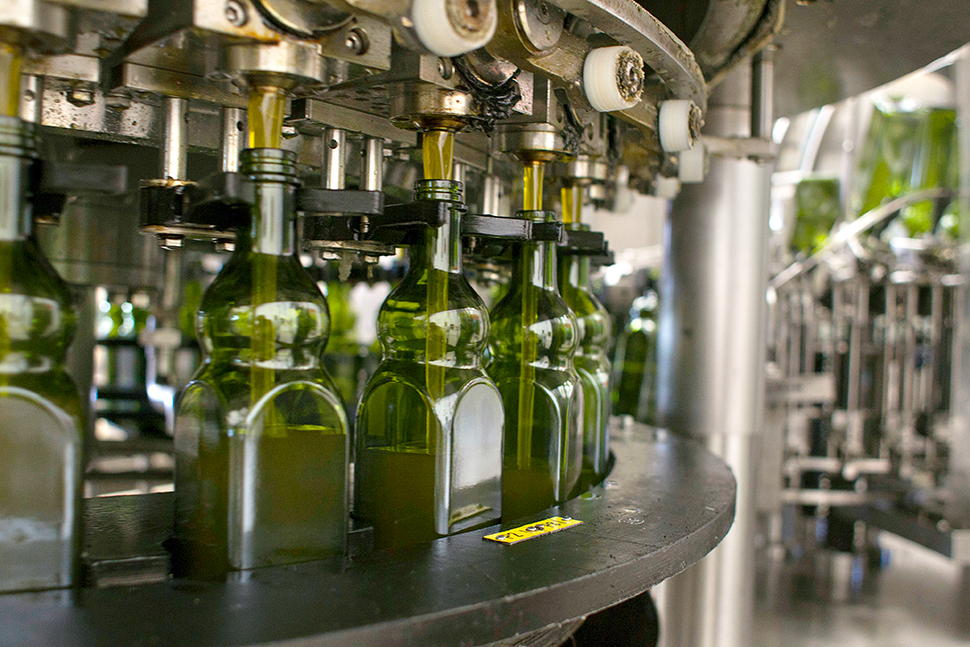
Olive oil is the juice that comes from the olive, a fruit that is grown on the olive tree. The answer to exactly how olive oil is made will depend on the type of olive oil, or grade, that it is.
Today we’re going to do a basic review of the grades of olive oil and how they are made. You can learn in any way that you want — reading, visual slideshares or videos.
For the best, easy, step-by-step review on how olive oil is made, I’d recommend watching this SlideShare presentation:
In Summary: How Each Grade Of Olive Oil Is Made
If you prefer to read articles , below you will find a review of the different olive oil grades, how they are made, and what makes them different from each other. You can also download this information in PDF form at the bottom of the article.
Extra Virgin Olive Oil
Extra Virgin is the highest grade of olive oil, available in both traditional and organic varieties. First, the olives are harvested and washed with cold water. They are ground into a paste and spun in a centrifuge to extract this high-quality oil. Typically, this process occurs within 24 hours of picking the olives from the trees. EVOO is known as the “first, cold-press”, though it’s actually spun instead of pressed in modern systems. It is technically an olive fruit juice, because it’s simply the liquid extracted from the fruit of the olive. To be considered Extra Virgin Olive Oil, the oil must have an acidity level lower than 0.8 and it must have zero taste flaws.
Want to see more on how this oil is made? Watch this explanatory video from National Geographic.
Virgin Olive Oil is processed in a similar way to Extra Virgin Olive Oil. The thing that differentiates Virgin and Extra Virgin is the acidity level after pressing: Virgin Olive Oil has a max acidity level of 2.0% while Extra Virgin Olive Oil must be below 0.08%.
The difference in acidity level is caused by the olives themselves and the time delay between harvest and production. After the some of olives are harvested when they’re waiting for pressing, the fruit continues to be affected by its natural environment. For example, some olives may remain in the field longer, some may be slightly riper or have more sun exposure. Each of these natural elements causes them to oxidize faster, which increases the acidity level.

Refined Olive Oil
Refined Olive Oil is Virgin Olive Oil that has been processed and refined to create a mild, light tasting, and more stable oil. The refining process also removes many of the health benefits that Extra Virgin Olive Oil offers, though this is debated. Refined olive oil is known as Light Olive Oil or Extra Light Tasting Olive Oil on retail shelves.
Olive Oil (Pure Olive Oil)
The grade Olive Oil is commonly referred to as Pure Olive Oil in the U.S. bulk and retail markets. By definition, this grade is comprised of Refined Olive Oil blended with Extra Virgin or Virgin Olive Oil in any ratio (though ratio blends from 70/30 to 99/1 are quite common). These ratios are determined by the supplier/manufacturer and can account for some of the price differences in Pure Olive Oil across the market. This oil has a milder taste and color than Extra Virgin or Virgin Olive Oil.
Olive Pomace Oil
Olive Pomace Oil is oil that is extracted from the pomace of the olive. “Pomace” is pulp made from the olive pit and already-squeezed olive fruit. When an olive is picked, it is ground into a paste which is squeezed or spun to get the initial oil out. The dry pulp left over is called the olive pomace.
A solvent (typically hexane) is added to the pomace to extract any remaining oil. The solvent is removed, and the remaining Olive Pomace Oil is refined. This is a similar process used to manufacture conventional seed oils like soybean and canola.
Blends: Seed Oils and Olive Oil
Olive oil can be mixed with canola, sunflower, safflower or soybean to create a blended oil that is lower cost and has a milder taste. These blends can be made with any grade of olive oil and any type of base oil.
Depending on that base oil that you choose, blends are also available in non-GMO, expeller pressed and organic varieties. Blends can be custom made with any ratio of oils, but the most common proportions are 75/25, 85/15, and 95/5.
Topics: Comparing Oils













